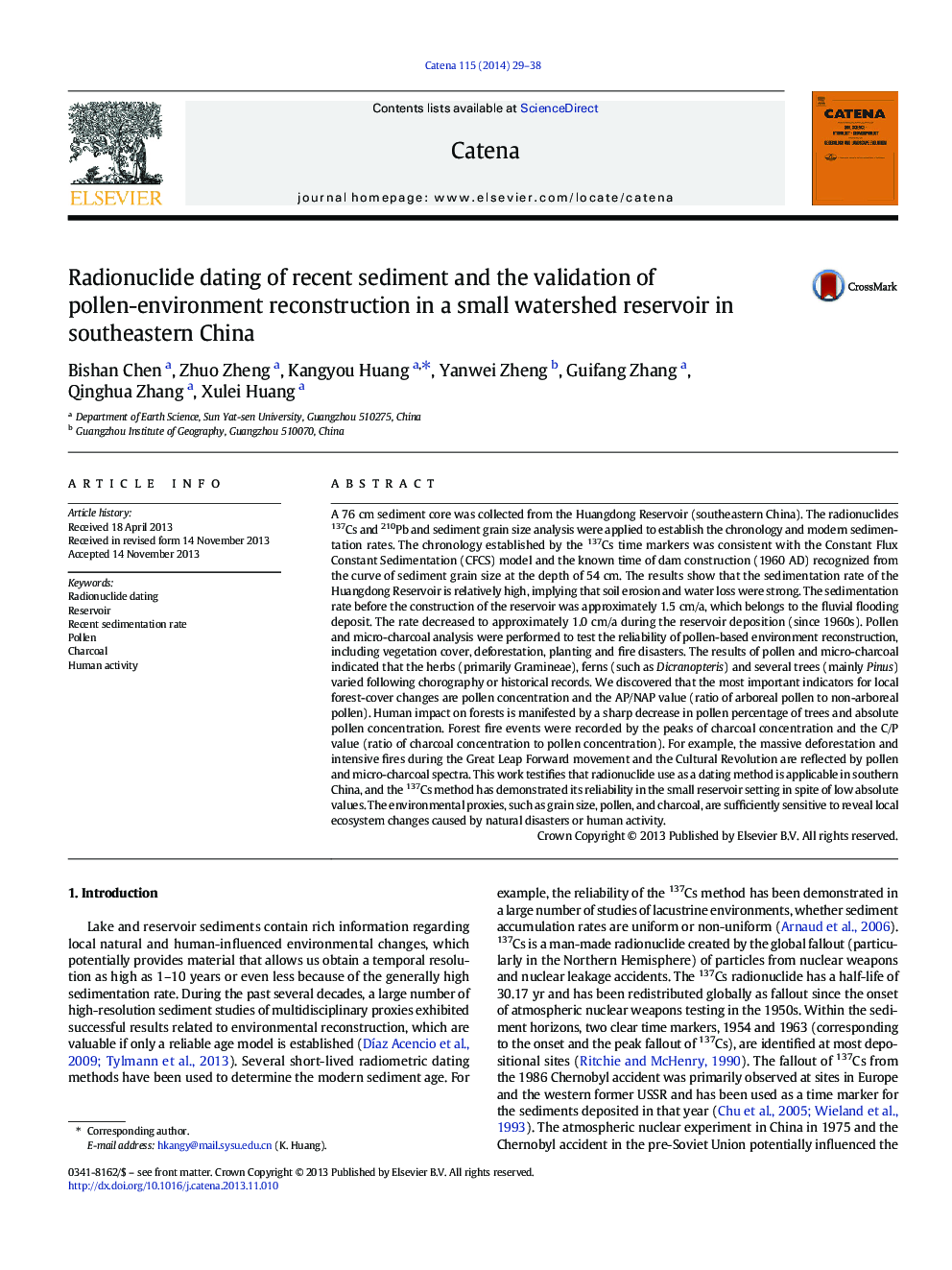| Article ID | Journal | Published Year | Pages | File Type |
|---|---|---|---|---|
| 6408093 | CATENA | 2014 | 10 Pages |
â¢The Age-model is established by 137Cs, 210Pb, pollen and historical records.â¢Past environment events derived from multiple proxies match with historical records.â¢Pollen record can perfectly reflect local vegetation cover and land-use.â¢Forest fire events were clearly recorded by charcoal concentration and C/P value.
A 76Â cm sediment core was collected from the Huangdong Reservoir (southeastern China). The radionuclides 137Cs and 210Pb and sediment grain size analysis were applied to establish the chronology and modern sedimentation rates. The chronology established by the 137Cs time markers was consistent with the Constant Flux Constant Sedimentation (CFCS) model and the known time of dam construction (1960Â AD) recognized from the curve of sediment grain size at the depth of 54Â cm. The results show that the sedimentation rate of the Huangdong Reservoir is relatively high, implying that soil erosion and water loss were strong. The sedimentation rate before the construction of the reservoir was approximately 1.5Â cm/a, which belongs to the fluvial flooding deposit. The rate decreased to approximately 1.0Â cm/a during the reservoir deposition (since 1960s). Pollen and micro-charcoal analysis were performed to test the reliability of pollen-based environment reconstruction, including vegetation cover, deforestation, planting and fire disasters. The results of pollen and micro-charcoal indicated that the herbs (primarily Gramineae), ferns (such as Dicranopteris) and several trees (mainly Pinus) varied following chorography or historical records. We discovered that the most important indicators for local forest-cover changes are pollen concentration and the AP/NAP value (ratio of arboreal pollen to non-arboreal pollen). Human impact on forests is manifested by a sharp decrease in pollen percentage of trees and absolute pollen concentration. Forest fire events were recorded by the peaks of charcoal concentration and the C/P value (ratio of charcoal concentration to pollen concentration). For example, the massive deforestation and intensive fires during the Great Leap Forward movement and the Cultural Revolution are reflected by pollen and micro-charcoal spectra. This work testifies that radionuclide use as a dating method is applicable in southern China, and the 137Cs method has demonstrated its reliability in the small reservoir setting in spite of low absolute values. The environmental proxies, such as grain size, pollen, and charcoal, are sufficiently sensitive to reveal local ecosystem changes caused by natural disasters or human activity.
